Alexej von Jawlensky (1864-1941)
Get a Jawlensky Certificate of Authenticity for your painting (COA) for your Jawlensky drawing.
For all your Jawlensky artworks you need a Certificate of Authenticity (COA) in order to sell, to insure or to donate for a tax deduction.
Getting a Jawlensky Certificate of Authenticity (COA) is easy. Just send us photos and dimensions and tell us what you know about the origin or history of your Jawlensky painting or drawing.
If you want to sell your Jawlensky painting or drawing use our selling services. We offer Jawlensky selling help, selling advice, private treaty sales and full brokerage.
We have been authenticating Jawlensky and issuing certificates of authenticity since 2002. We are recognized Jawlensky experts and Jawlensky certified appraisers. We issue COAs and appraisals for all Jawlensky artworks.
Our Jawlensky paintings and drawings authentications are accepted and respected worldwide.
Each COA is backed by in-depth research and analysis authentication reports.
The Jawlensky certificates of authenticity we issue are based on solid, reliable and fully referenced art investigations, authentication research, analytical work and forensic studies.
We are available to examine your Jawlensky painting or drawing anywhere in the world.
You will generally receive your certificates of authenticity and authentication report within two weeks. Some complicated cases with difficult to research Jawlensky paintings or drawings take longer.
Our clients include Jawlensky collectors, investors, tax authorities, insurance adjusters, appraisers, valuers, auctioneers, Federal agencies and many law firms.
We perform Alexej von Jawlensky art authentication, appraisal, certificates of authenticity (COA), analysis, research, scientific tests, full art authentications. We will help you sell your Alexej von Jawlensky or we will sell it for you.
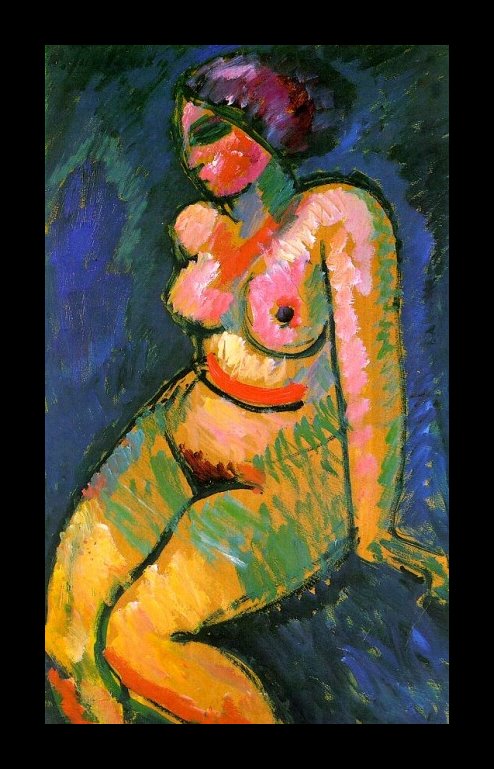

Note: Also spelled Alexei and Alexey, depending on language.
Russian born and the son of a colonel, Alexej von Jawlensky was not likely to have become a well-known Fauve painter. However, while he was in the process of becoming an officer himself in the Imperial Guards, Jawlensky found art. He then left the service and moved to St. Petersburg to study realism at the Academy of Fine Arts.
With Munter and Kandinsky, Jawlensky founded the New Association of Artists in Munich and was also a founding member of the Blue Riders (1911). The Blue Riders (Der Blaue Reiter) was named for its founding member Franz Marc’s love of horses as well as Wassily Kandinsky’s fondness and use of the color blue. Their goal, as a group, was to obtain spiritual truths via their art. They promoted modern art, as well as the connection between art and music. The Blue Riders saw a spiritual symbolism associated with color that were spontaneous and ever changing. Eventually, they dabbled in cubism and abstraction but finally broke up in 1914.
Jawlensky spent most of his life in Germany though found inspiration from French painter Matisse. Jawlensky’s color palette was dominated by warm tones such as yellows, oranges and especially reds. This can be seen in his abstract portrait pieces. He only painted a handful of landscapes during his career, and many of them were created during the summer of 1904.
While Jawlensky is considered a Fauve artist, he also applied traditional Russian art, such as icon painting, into his works. Essentially, it was the Expressionist style that Jawlensky used to truly embody his work. Jawlensky did watercolors and oil paintings, though oil paintings dominated his portfolio. He produced many “abstract heads” and portraits, which he began painting while living in Switzerland around 1918. There is a sense of religious meditation that distinguishes his landscapes and abstract portraits. It has been said by art critics that his abstract heads bear a mystical value. Jawlensky’s sense of mystical religion was most likely a product of his Eastern Orthodox upbringing.
One may argue that there is little difference in his abstract head works, especially in Abendi, Rosy Light, Komposition and Symphony. In each of these works, there is little difference between the actual subject other than changes in color and shading. This series of abstract heads clearly defines his dabbling with abstract art as well as cubism.
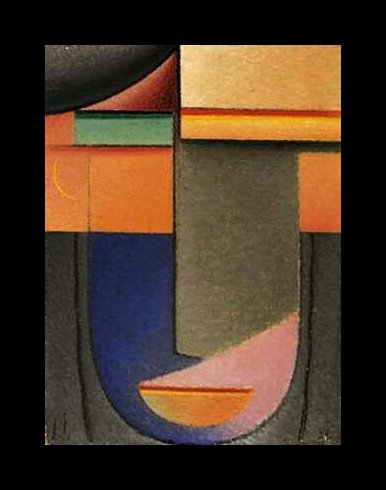
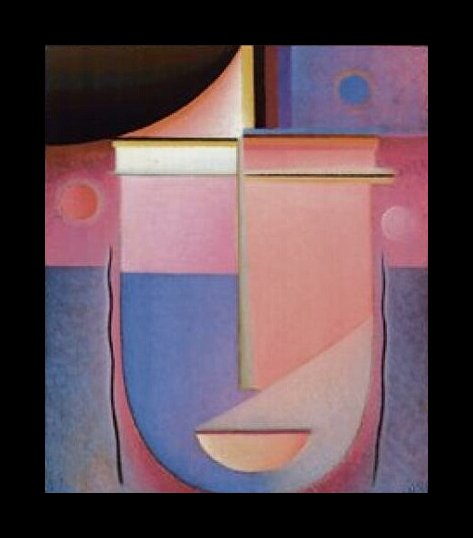
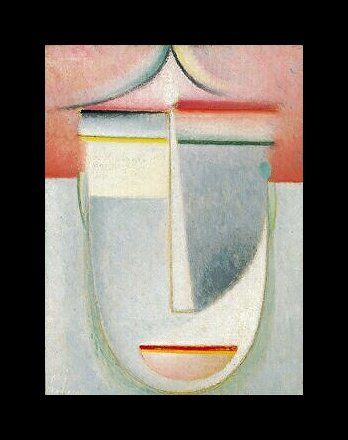
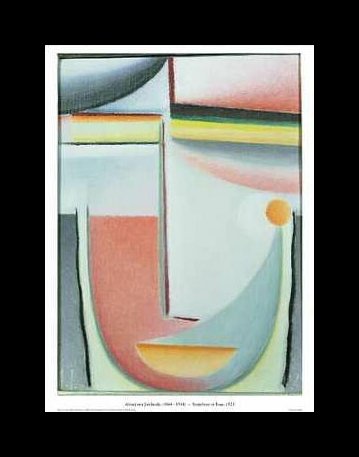
It is known that Jawlensky spent most of his life in Germany, where he eventually died. His painting reflects the German landscape, as can be seen in Landscape Variation and Hills(1912). Unlike many other Fauvist or Impressionist painters of the time, who painted their landscapes of the sea or the French countryside, there is something more obviously northern about the landscapes that Jawlensky paints. More hills and pine trees dominated his landscapes, a sure sign of a German landscape.
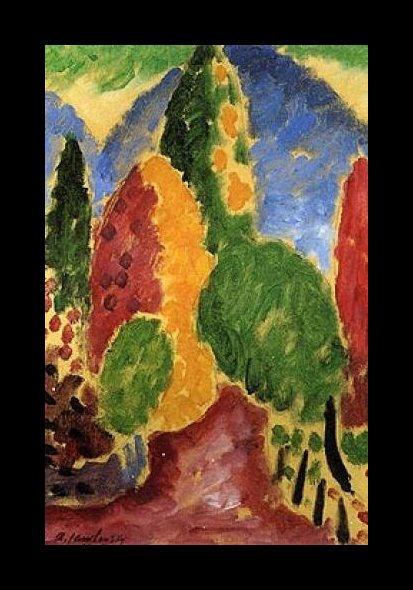

One of the best tell-tale ways to discover if you have a true Jawlensky or not is to study what the work is actually painted on. For whatever reason, Jawlensky did not paint on a canvas the majority of the time. He used cardboard instead and mounted his work on wood. Even his highest selling work,
, still managed to be worth millions despite being painted on mere cardboard.
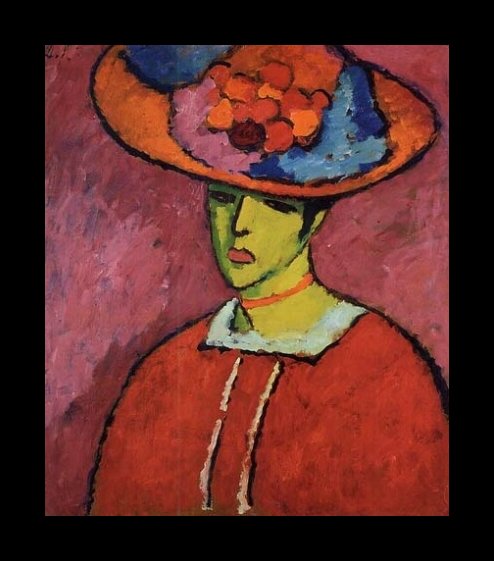
Jawlensky was bedridden due to complete physical paralysis from 1938 until he died in 1941. The years leading up to Jawlensky’s complete paralysis were plagued with heavy arthritis beginning in 1927 and reports of hospital stays in 1930 due to heavy pain. At this time, Jawlensky had embraced an abstract style, so it is possible that some of his works from that time were not 100% finished by his hand alone.
Because abstract art is so hard to decipher when authenticating, there may never be a way to tell if Jawlensky’s work from 1927 on was truly his own.
One of his most famous paintings is Girl Wearing an Apron, 1909. In November of 2003, his painting Schokko, 1910 sold for $8 million, breaking the previous record of $3 million for one of Jawlensky’s works.

Reviews
1,217 global ratings
5 Star
4 Star
3 Star
2 Star
1 Star
Your evaluation is very important to us. Thank you.
